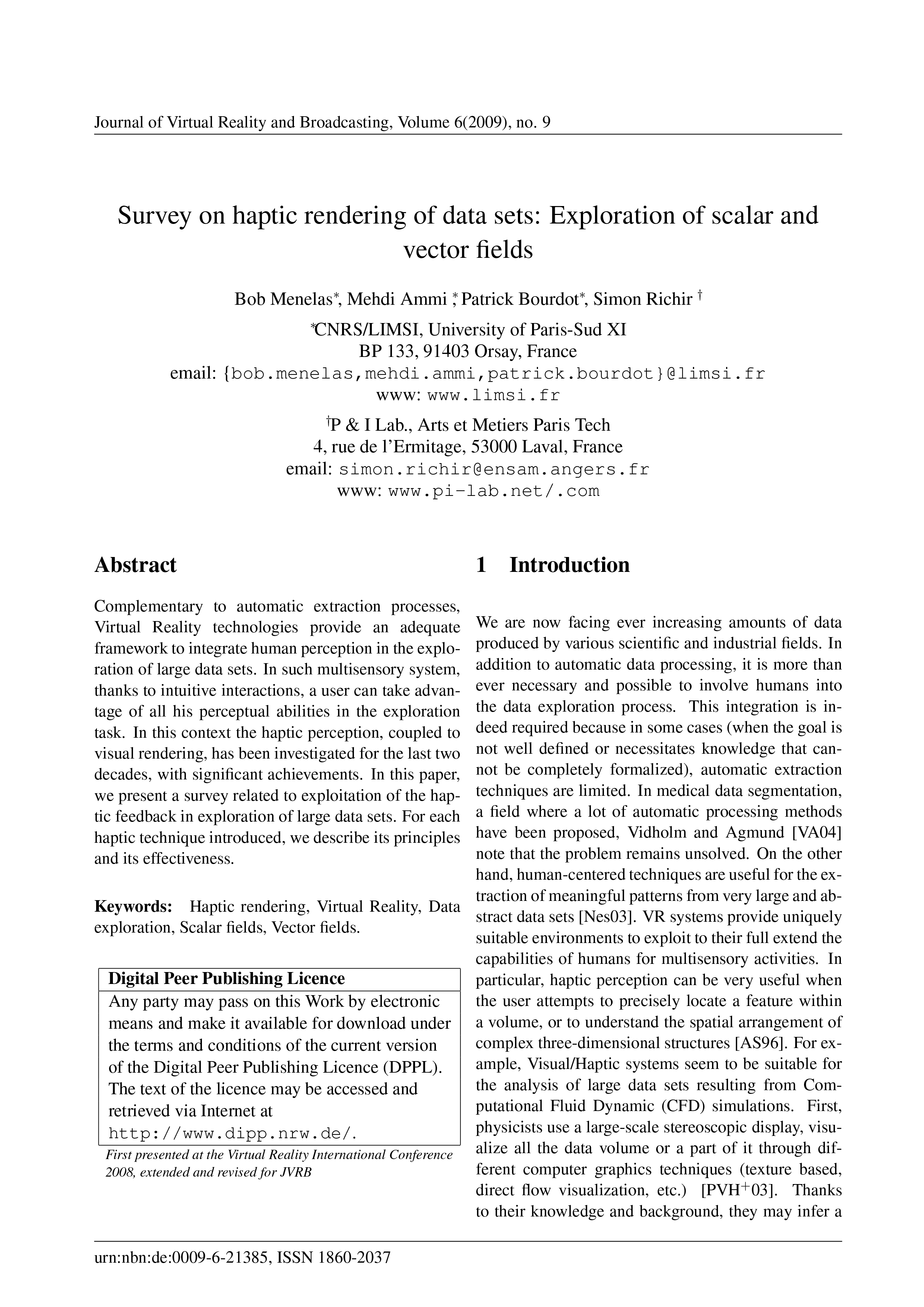Survey on haptic rendering of data sets: Exploration of scalar and vector fields
DOI:
https://doi.org/10.20385/1860-2037/6.2009.9Keywords:
Data exploration, Haptic rendering, Scalar fields, Vector fields, Virtual RealityAbstract
Complementary to automatic extraction processes, Virtual Reality technologies provide an adequate framework to integrate human perception in the exploration of large data sets. In such multisensory system, thanks to intuitive interactions, a user can take advantage of all his perceptual abilities in the exploration task. In this context the haptic perception, coupled to visual rendering, has been investigated for the last two decades, with significant achievements. In this paper, we present a survey related to exploitation of the haptic feedback in exploration of large data sets. For each haptic technique introduced, we describe its principles and its effectiveness.
Published
2009-12-03
Issue
Section
VRIC 2008





